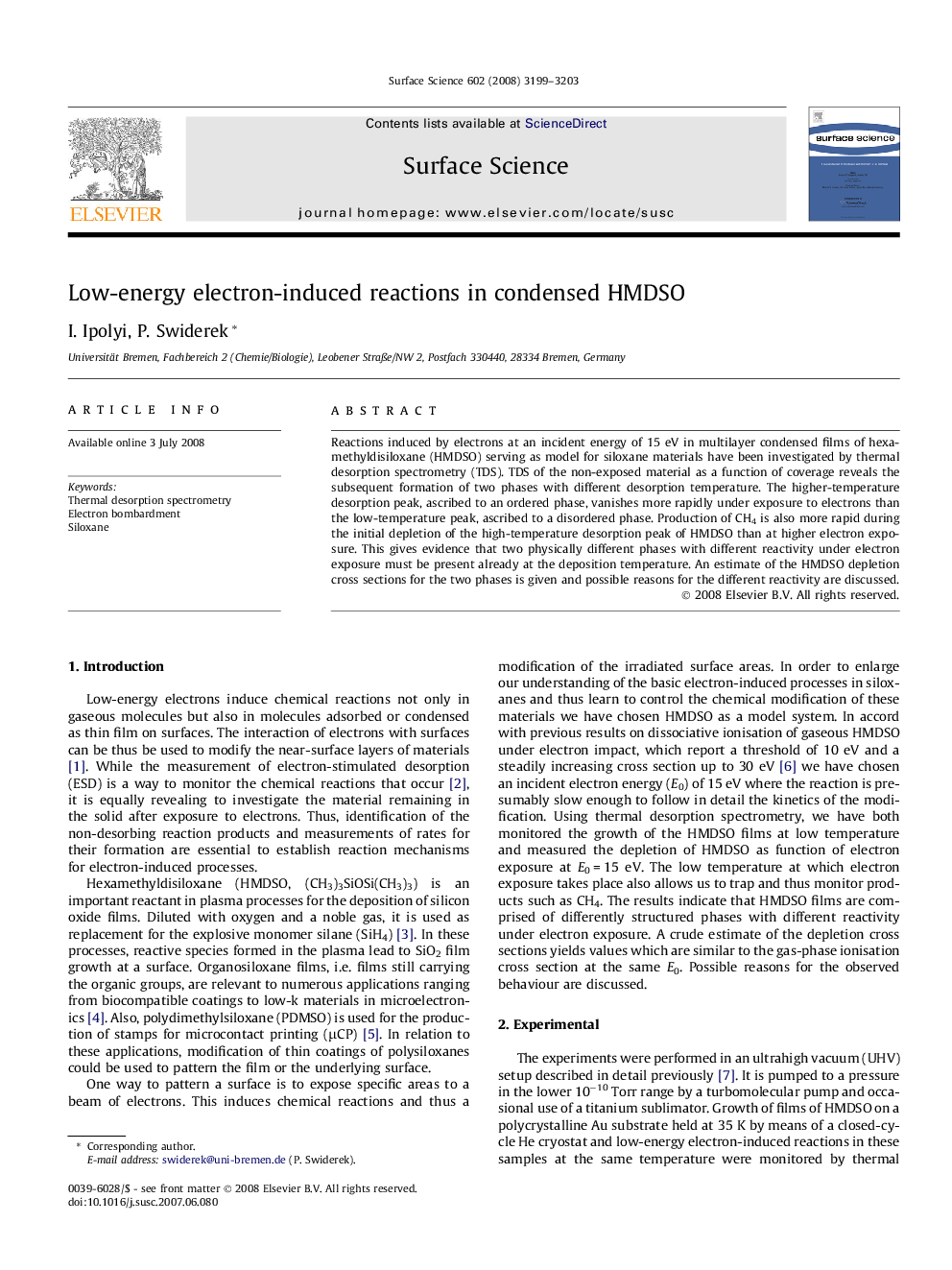| Article ID | Journal | Published Year | Pages | File Type |
|---|---|---|---|---|
| 5424423 | Surface Science | 2008 | 5 Pages |
Abstract
Reactions induced by electrons at an incident energy of 15 eV in multilayer condensed films of hexamethyldisiloxane (HMDSO) serving as model for siloxane materials have been investigated by thermal desorption spectrometry (TDS). TDS of the non-exposed material as a function of coverage reveals the subsequent formation of two phases with different desorption temperature. The higher-temperature desorption peak, ascribed to an ordered phase, vanishes more rapidly under exposure to electrons than the low-temperature peak, ascribed to a disordered phase. Production of CH4 is also more rapid during the initial depletion of the high-temperature desorption peak of HMDSO than at higher electron exposure. This gives evidence that two physically different phases with different reactivity under electron exposure must be present already at the deposition temperature. An estimate of the HMDSO depletion cross sections for the two phases is given and possible reasons for the different reactivity are discussed.
Related Topics
Physical Sciences and Engineering
Chemistry
Physical and Theoretical Chemistry
Authors
I. Ipolyi, P. Swiderek,
